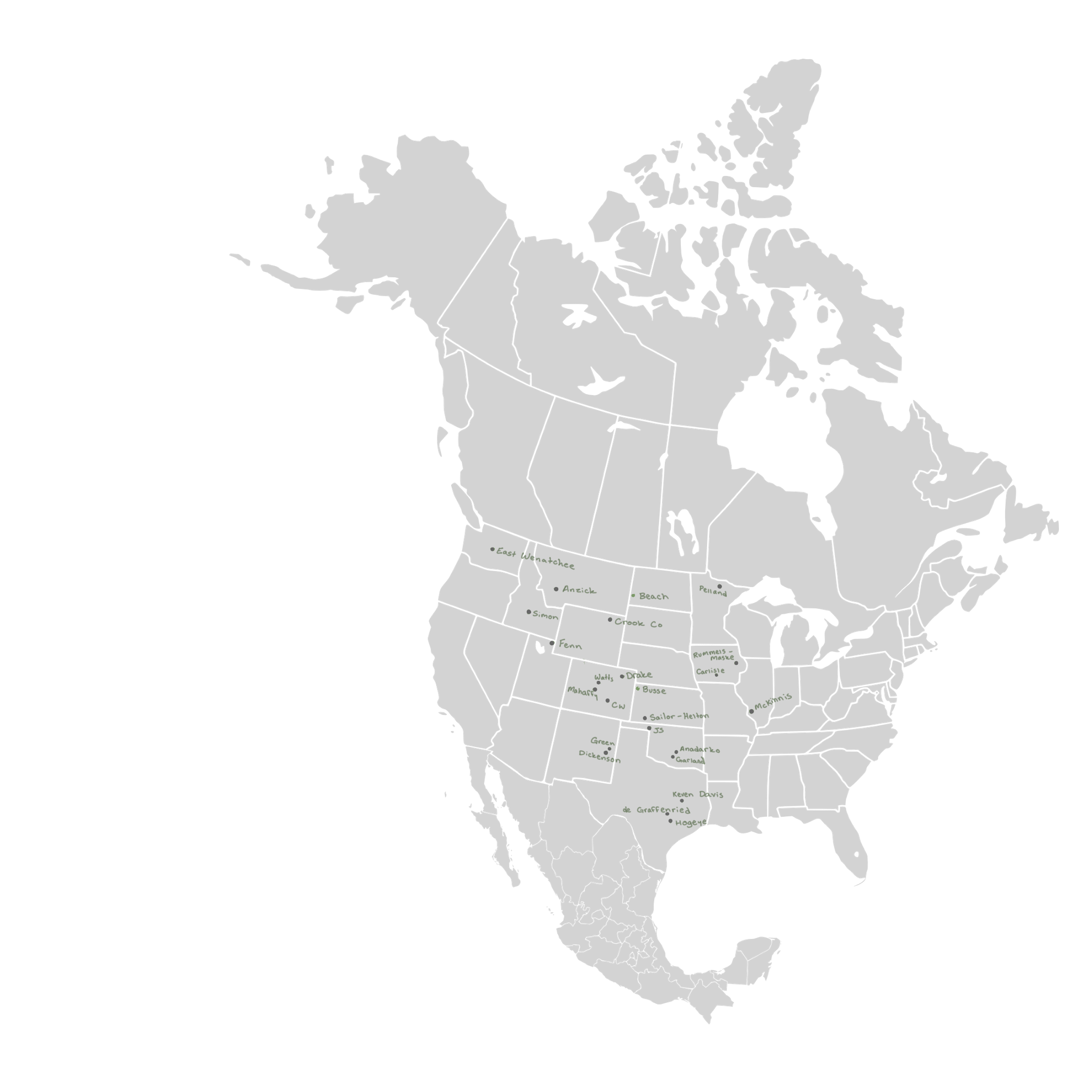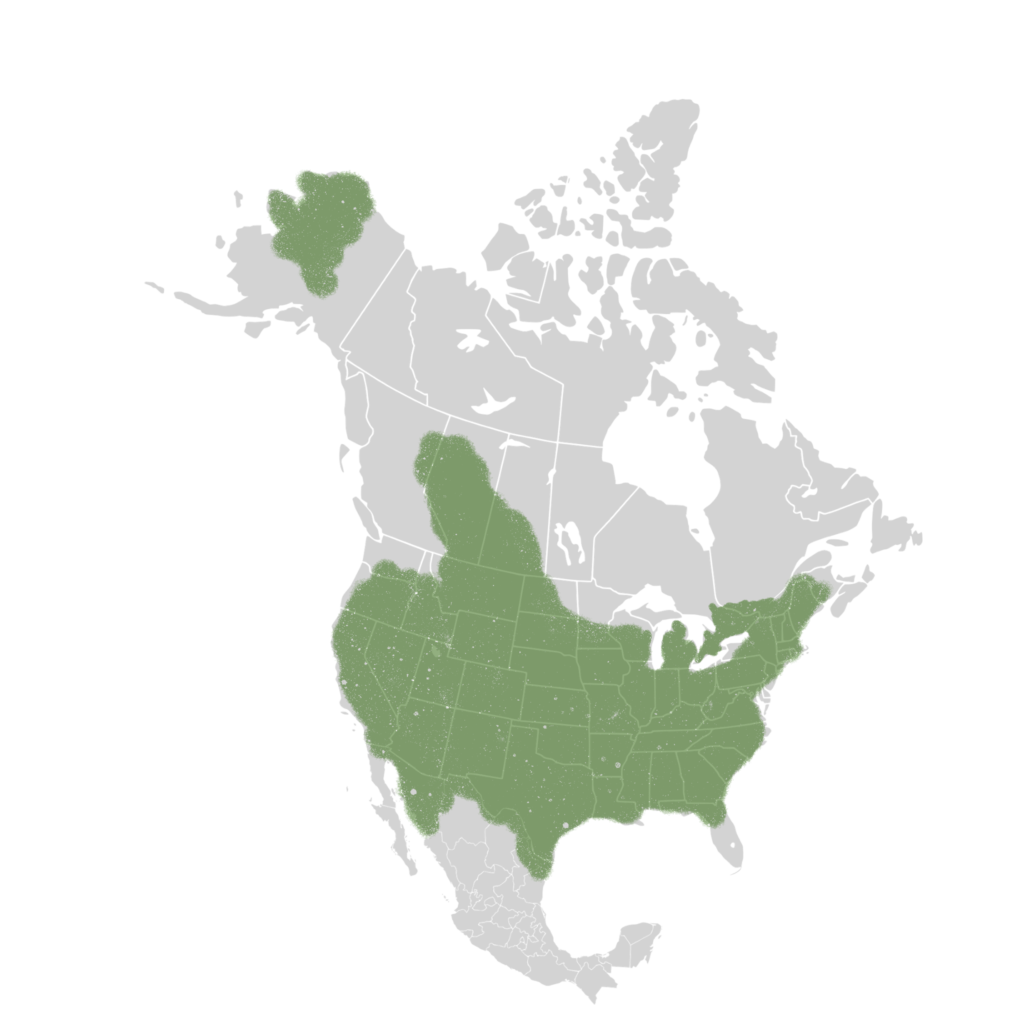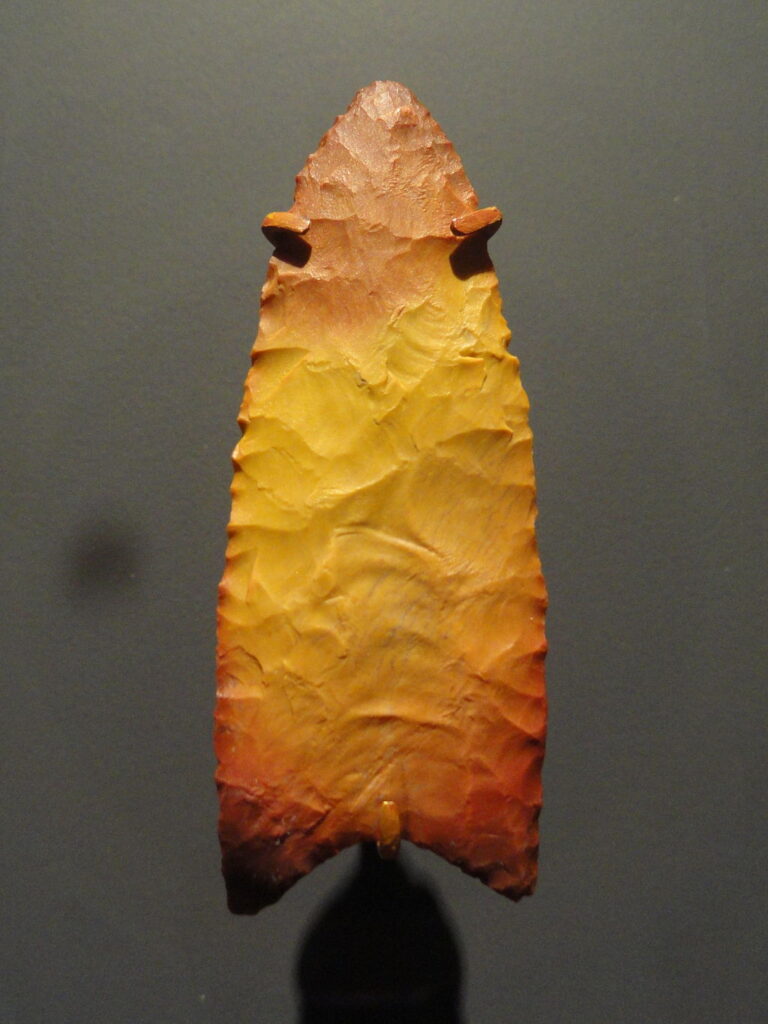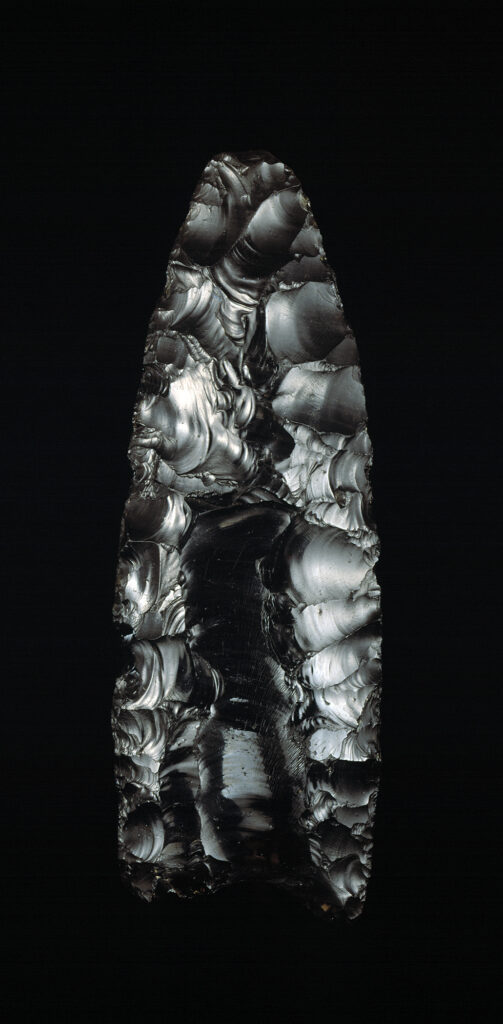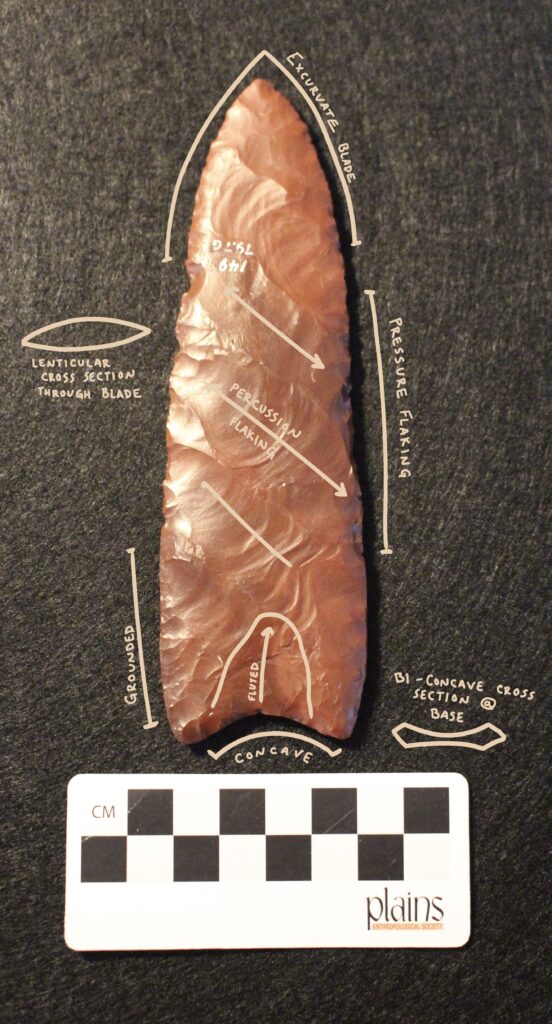Clovis
13,000 - 10,000 BC ; [Paleo]
While there may have been older cultural complexes in the America’s, Clovis is the earliest accepted in the scientific community. Without a precursor in Asia it is predicted that this cultural complex developed uniquely in North America; and through North America it spread, from California to the East Coast.
Clovis people subsisted off large mammals during the end of the Pleistocene. With a different climate and more rainfall than today, the Great Plains supported Mammoth and Bison, which were a common food choice as they could feed large numbers of people. Although these large bones preserve better, Clovis people likely had a varied diet of lots more local foods and animals.¹
The continent would have been sparsely populated as people migrated throughout it, and perhaps for that reason we see lots of variability in the styles of Clovis points. People would have likely moved through the Bering Land Bridge, following the megafauna – but other migration routes are now theorized. These routes follow the pacific coast as a coastal migration.
Clovis Points
Clovis points are often made from high quality material spread apart by far distances. One of the most distinctive aspects to the Clovis point is the flute, or the thinning that runs vertically from the base of the point. Creating these types of points would have been time consuming and perhaps prone to high failure rates, therefore they were resharpened when possible. It should also be noted that there is a wide variety of variation within the cultural tradition of Clovis Points.²
Typology
- Form
- Base
- Horizontal Cross Section
- Vertical Cross Section
- Reduction
- Stem Grinding
- Basal Grinding
- Triangular Lanceolate
- Straight to Concave
- Bi-Concave (stem) and lenticular (blade)
- Uniform
- Pressure and/or percussion
- Yes
- Yes
Notable Sites
- Blackwater Draw, New Mexico – This is the Clovis “type-site” (meaning this was the first place Clovis points were defined, and characterized)
- Gault, Texas – A large site covering 39 acres with habitation spanning from Clovis through Folsom, Archaic, and late precontact.
- Engraved stones were recovered from this habitation site
- Engraved stones were recovered from this habitation site
- Sandia Cave, New Mexico – Has points possibly predating 11,500 RCYBP (radiocarbon years before present).
- Murray Springs, Arizona – Site contains a mammoth-bone tool, which use is debated but could be a spear straightener.
Clovis Caches
Clovis Caches: these are sites where collections of points were recovered, perhaps to be returned to.
Click the image to enlarge.
DIstribution map
GALLERY
References cited
Typology:
Taylor, J. (2006). Projectile points of the high plains: New perspectives on typology based on examinations of original type site specimens (1st ed). Jeb Taylor Artifacts.
¹Wood, W. R. (Ed.). (1998). Archaeology on the Great Plains. Univ. Press of Kansas.
²Cassells, E. S. (1997). The Archaeology of Colorado (Rev. ed). Johnson Books.

